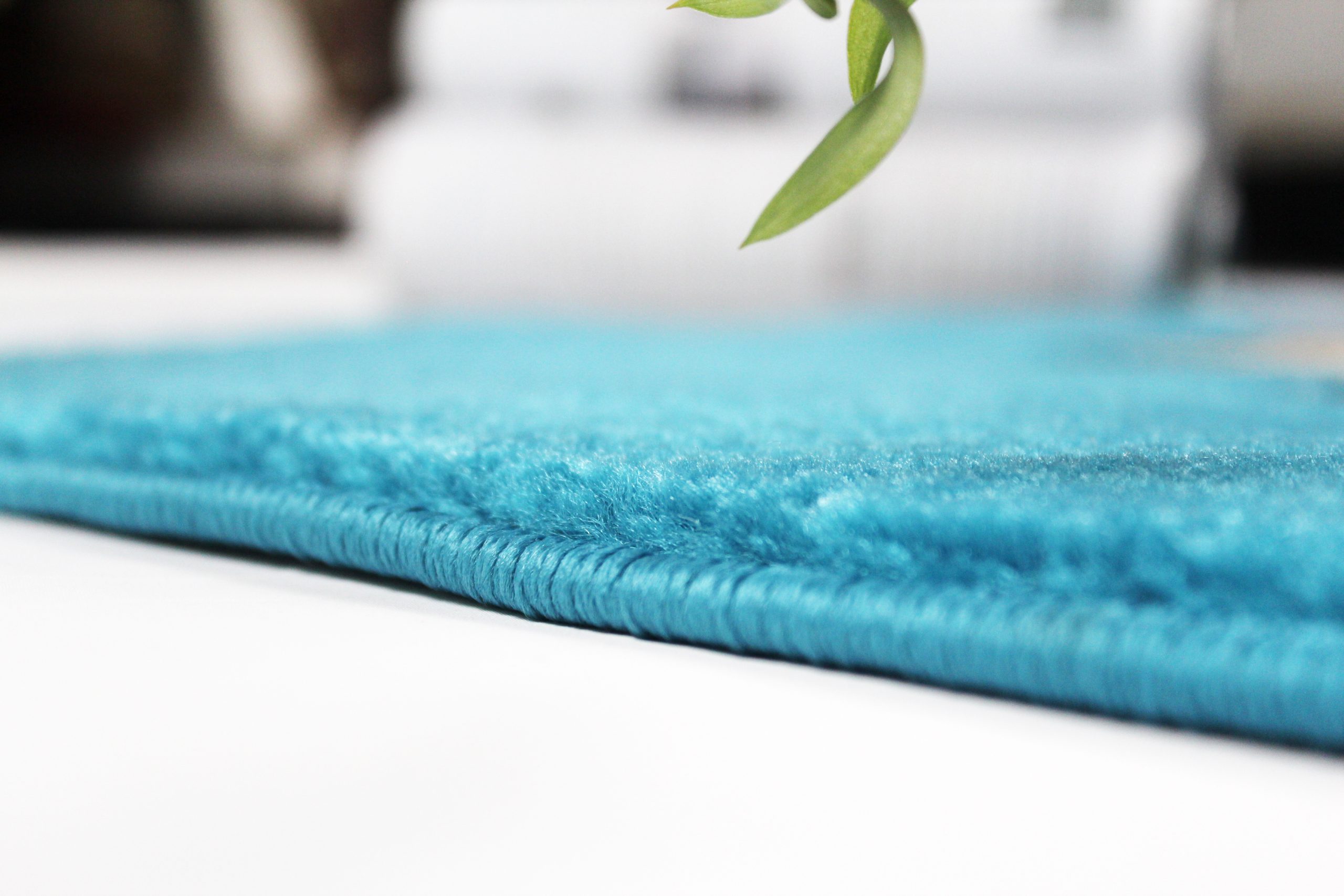The most durable material for area rugs is typically wool, due to its inherent strength, resilience, and ability to withstand heavy foot traffic without showing significant wear. Wool fibers are crimped, which gives them a spring-like quality that allows them to bounce back after being crushed or stepped on, helping the rug to maintain its pile and shape over time.
Other durable materials for area rugs include:
– **Nylon**: Synthetic and highly resilient, nylon is known for its durability and resistance to stains. It’s a popular choice for high-traffic areas and can hold up well to repeated use.
– **Polyester**: Another synthetic material, polyester offers good stain resistance and durability. It’s often used in looped weaves and is a cost-effective option for those looking for a long-lasting rug.
– **Polypropylene**: Often referred to as olefin, polypropylene is a budget-friendly synthetic fiber that’s stain-resistant and durable. It’s less resilient than nylon but still holds up well in areas with moderate foot traffic.
– **Jute**: A natural fiber, jute is strong and durable, with a textured, earthy appearance. It’s best suited for low-traffic areas due to its tendency to shed and is not as resilient as wool or synthetics.
– **Sisal**: Similar to jute, sisal is a plant-based fiber known for its strength and durability. It’s a good choice for rustic or casual spaces and, like jute, is not ideal for high-traffic zones.
– **Sea grass**: A hardwearing natural fiber, sea grass is known for its durability and unique texture. It’s moisture-resistant and often used in casual or beach-style decors.
When selecting a durable area rug, it’s important to consider not only the material but also the construction method (such as hand-knotted, tufted, or power-loomed), pile height, and weave density, as these factors contribute to the rug’s overall durability and longevity. For the highest level of durability, a wool rug with a dense weave and tight knotting is generally considered the best choice, especially for high-traffic areas.

Christmas Kitchen Mat Rectangle Entrance Doormat Bedroom Home Floor Decoration Living Room Carpet Hallway Bathroom Anti-slip Rug 34
What is the most durable material for area rugs?
When it comes to choosing the most durable material for area rugs, there are several options to consider. The durability of a rug is an important factor to think about, especially in high-traffic areas of your home or in commercial spaces. A durable rug will be able to withstand regular wear and tear, resist staining, and maintain its appearance for years to come. In this blog post, we will explore some of the most durable materials for area rugs and discuss their unique characteristics.
1. Wool
Wool is a classic choice for area rugs and is known for its durability and natural resistance to stains. Wool rugs are able to withstand heavy foot traffic and are easy to clean, making them a great option for busy areas of the home. Additionally, wool has natural water-repellent properties, which can help prevent liquid spills from seeping into the fibers. While wool rugs may require a higher initial investment, their longevity and resilience make them a cost-effective choice in the long run.
2. Nylon
Nylon is a synthetic material that is widely used in the production of area rugs due to its exceptional durability. Nylon rugs are highly resistant to abrasion, making them ideal for high-traffic areas such as hallways, entryways, and living rooms. Additionally, nylon is known for its fade resistance, so these rugs will maintain their vibrant colors even in sun-drenched spaces. Nylon rugs are also easy to clean and maintain, making them a practical choice for busy households.
3. Polypropylene
Polypropylene, also known as olefin, is a popular choice for outdoor rugs and indoor-outdoor spaces due to its exceptional durability and weather resistance. Polypropylene rugs are resistant to moisture, mildew, and staining, making them an ideal option for areas prone to spills or exposure to the elements. These rugs are also easy to clean and are often more affordable than natural fiber rugs, making them a practical choice for budget-conscious consumers.
4. Polyester
Polyester rugs are valued for their softness, vibrant colors, and resistance to fading and staining. While polyester may not be as naturally durable as wool or nylon, it is often blended with other materials to enhance its strength and resilience. Polyester rugs are a great option for areas of the home that do not experience extremely heavy foot traffic, such as bedrooms or home offices. Additionally, polyester is a budget-friendly option for those seeking a durable and stylish rug.
5. Jute
Jute is a natural fiber that is valued for its sustainability and durability. Jute rugs are often used in casual or rustic spaces and can add a touch of texture to any room. While jute may not be as resilient as some synthetic materials, it is still a durable option for low to medium-traffic areas of the home. Jute rugs are also biodegradable and easy to maintain, making them an eco-friendly choice for environmentally conscious consumers.
In conclusion, the most durable material for area rugs ultimately depends on your specific needs and preferences. Wool is an excellent choice for those seeking natural resilience and timeless appeal, while synthetic materials like nylon, polypropylene, and polyester offer exceptional durability and practicality. Jute provides a sustainable and textured option for those looking to incorporate natural fibers into their home decor. By considering the unique characteristics of each material, you can select a durable area rug that will enhance the beauty of your space and withstand the test of time.



